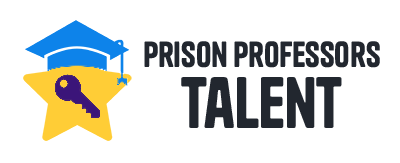We grow stronger when we collaborate with others. The more we focus on building relationships, leveraging collective strengths, and aligning goals to create meaningful change, the more effective we become in our advocacy. I began collaborating with the Edovo Foundation soon after I completed my prison term. That relationship has lasted for longer than a decade, and it’s opened the door to influence the lives of more than 1 million people.
During my time in prison, I started creating educational lessons and building programs based upon the lessons that I learned from leaders. Those lessons would only be words on a page if I didn’t partner and collaborate with other organizations. I began working with universities, and then opportunities opened to connect with organizations like the Edovo Foundation. That’s when our lessons began to reach thousands of people, and eventually, millions through Prison Professors.
Build strong collaborations to scale your reach and make a more lasting impact.
1. Self-Reflection
Before engaging in any collaboration, introspect. From leaders such as Jean-Jacques Rousseau, I learned more about the importance of defining success, setting goals, and working to advance the social contract. I made bad decisions as a young man, and I’d have to work to atone, or to make things right. Yet as a result of my conviction, I understood that others would judge me, or be reluctant to interact with me I had to earn trust, and that required self-reflection.
- Example: I asked myself hard questions while incarcerated. What could I offer? How could my experiences serve others? This clarity allowed me to align with organizations that shared my purpose.
2. Resilience
Collaboration doesn’t always go smoothly, and resilience is key to overcoming setbacks. Nelson Mandela’s leadership during his imprisonment showed how maintaining focus and resolve can inspire positive change—even under adverse conditions.
- Example: When one opportunity seemed to stall, I didn’t give up. I learned to pivot and keep pushing forward, understanding that resilience paves the way for long-term success. When striving to make an impact, or reach any goal, we’ve got to anticipate obstacles. There will always be more obstacles.
3. Strategic Vision
Collaboration is most effective when it’s guided by a clear, strategic vision. Define your goals, break them into actionable steps, and communicate your plan clearly. Strategic vision turns abstract ideas into real-world outcomes.
- Example: When I launched Prison Professors, I had to build with incremental stages. In the beginning, I used the website and YouTube channel to get my message out while I simultaneously worked to earn a living. Over time, as my financial stability improved, I started to transform the site into a nonprofit. Now I’m building it as a platform to impact millions, and to succeed, I continue feeding our partnership and collaboration with other nonprofit organziations, such as the Edovo Foundation. Those collaborations help us to expand the reach of our programs.
4. Accountability
Trust is built on accountability. Taking responsibility for your actions shows partners that you’re dependable and committed to mutual goals.
- Example: Throughout my projects, I kept track of tasks and progress, demonstrating reliability and following through on promises.
5. Education as Liberation
Lifelong learning fuels successful collaboration. Malcolm X’s transformation through education taught me that equipping yourself with knowledge not only empowers you but also enhances your value in partnerships.
- Example: I constantly worked to learn while I served my sentence. Even though the prison system brought obstacles, I could always work to develop my writing skills, my vocabulary, and a self-directed work ethic. By reading intentionally, I could learn more. And the more I learned, the more I could contribute meaningfully to any collaboration.
Building Successful Collaborations
- Identify Shared Goals
Successful collaborations begin with a shared purpose. Aligning your goals with those of your partners ensures clarity and collective motivation.
- Action Step: Ask questions like, “What is our mutual objective? How do our strengths complement each other?”
- Communicate Clearly
Transparency and consistent communication are the backbone of any effective partnership. Make sure everyone understands each person’s role and responsibilities. While Edovo works to build new relationships with institutions, I work to create lessons every day. Those lessons will teach and inspire others.
- Action Step: Set regular check-ins to discuss progress, challenges, and next steps.
- Leverage Strengths
Each partner brings unique skills and perspectives. Understanding and maximizing these strengths creates a synergy that drives results.
- Example: With Edovo, their technological platform amplified the educational content I created, making a wider impact possible.
- Adapt and Overcome Obstacles
Every collaboration will encounter challenges, from misaligned expectations to unexpected setbacks. Flexibility and resilience ensure continued progress.
- Action Step: When challenges arise, revisit the shared mission and brainstorm solutions together.
- Celebrate Milestones
Recognizing progress fosters motivation and strengthens partnerships.
- Action Step: Celebrate victories, big or small, and acknowledge each member’s contributions.
Personal Case Study
When I began creating educational resources in prison, I had a clear mission but lacked the tools to scale. Collaborating with Edovo made all the difference. Edovo’s platform allowed my lessons to reach tens of thousands of incarcerated individuals in their facilities. Over time, this partnership evolved, and today, Prison Professors reaches more than 1 million people who are in custody.
Success began when I realized that to scale, I needed to build relationships with others who shared my vision for making an impact on the lives of others.
Conclusion
Collaborations are powerful tools for advocacy, growth, and achieving meaningful goals. By focusing on self-reflection, resilience, strategic vision, accountability, and lifelong learning, you can create partnerships that not only amplify your efforts but also lead to lasting change.
Through my own experiences, I’ve learned that collaboration is about more than shared work—it’s about building meaningful relationships that carry us further than we could go alone.
Remember, real success comes from action. Start small, stay disciplined, and continuously seek ways to connect your strengths with others who share your mission.
Self-Directed Question:
- How can you build meaningful collaborations today that align with your values and long-term vision?
- What steps can you take to strengthen your relationships and amplify your efforts?

